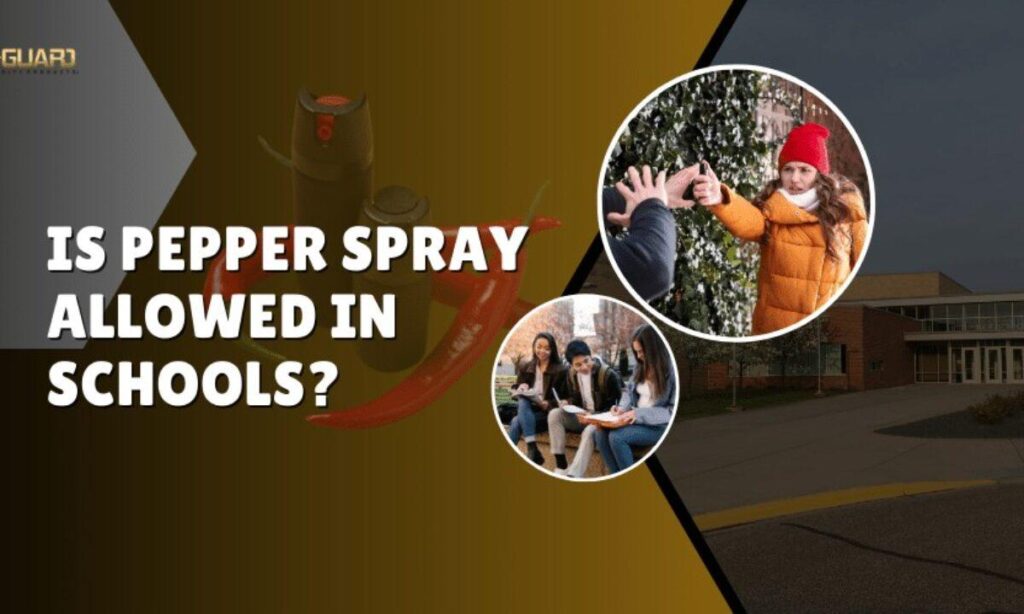Table of Contents
- Rising Incidents of Pepper Spray Misuse in Educational Institutions Across the Country
- Underlying Factors Contributing to Increased Pepper Spray Abuse Among Students
- Impact of Pepper Spray Incidents on School Safety and Student Wellbeing
- Strategic Measures and Policy Recommendations to Curtail Pepper Spray Misuse in Schools
- To Wrap It Up
Rising Incidents of Pepper Spray Misuse in Educational Institutions Across the Country
Recent reports indicate a troubling surge in the use of pepper spray incidents within schools, raising serious concerns about student safety and disciplinary measures. Authorities and educators alike are grappling with the challenge of addressing misuse that frequently escalates tensions rather than resolving conflicts. This alarming trend has been linked to increased accessibility of self-defense sprays and a lack of comprehensive policies governing their possession and deployment on campus grounds. As a result, there is a growing call for stricter enforcement and clearer guidelines to protect both students and staff from unintended harm.
Key factors contributing to this rise include:
- Inadequate supervision during school hours and extracurricular activities
- Lack of awareness programs addressing the consequences of misuse
- Insufficient training for school security personnel on handling such incidents
- Peer pressure and social conflicts exacerbated by the availability of pepper spray
Experts emphasize the importance of implementing holistic measures that combine education, strict policy enforcement, and mental health support for students. Only through coordinated efforts can educational institutions hope to curb these dangerous episodes and foster a safer learning environment nationwide.
Underlying Factors Contributing to Increased Pepper Spray Abuse Among Students
Recent studies and school reports have identified several key contributors to the troubling rise in pepper spray misuse among students. A notable factor is the easy accessibility of pepper spray products, often purchased online without stringent age restrictions. Coupled with the lack of comprehensive education about its dangers, many students underestimate the harmful effects of these sprays, viewing them as harmless prank tools rather than dangerous substances. Peer pressure and a desire for social dominance also play significant roles, with some students using pepper spray to intimidate or gain control within social groups. Additionally, increased social tensions and bullying within schools have led some students to resort to pepper spray as a misguided form of retaliation.
Environmental and psychological factors further exacerbate this issue. Schools with insufficient supervision in common areas tend to experience higher incidents, reflecting a clear correlation between monitoring lapses and misuse. Mental health challenges, including stress and feelings of alienation, have driven certain students to act out impulsively, sometimes weaponizing pepper spray during conflicts or outbursts. Parents and educators also highlight the growing influence of social media trends that glamorize or normalize dangerous behavior, encouraging experimentation despite potential consequences. Addressing these underlying issues through targeted awareness programs, tighter regulatory measures, and community engagement remains critical to curbing this escalating concern.
- Easy access and online availability
- Lack of awareness about health risks
- Peer pressure and social dynamics
- Poor school supervision
- Mental health and stress factors
Impact of Pepper Spray Incidents on School Safety and Student Wellbeing
Recent incidents involving pepper spray within educational settings have led to a noticeable decline in the overall sense of security among students and staff. Beyond the immediate physical discomfort caused by these events, there is a growing psychological toll that manifests as increased anxiety, fear, and distrust in the school environment. Such episodes disrupt classroom routines, impair learning, and necessitate unplanned evacuations or lockdowns, thereby compromising the educational process. School administrations are now grappling with the challenge of balancing effective disciplinary measures while maintaining a supportive atmosphere conducive to learning and growth.
The ripple effects extend beyond emotional distress, influencing student wellbeing and academic outcomes. Key concerns include:
- Increased absenteeism and disengagement resulting from fear of recurrence
- Diminished peer relationships and social cohesion due to heightened tensions
- Heightened strain on counseling and mental health resources within schools
- Potential normalization of aggressive behaviors if not addressed promptly
Strategic Measures and Policy Recommendations to Curtail Pepper Spray Misuse in Schools
To effectively tackle the surge in pepper spray misuse within educational environments, it is imperative that school administrations collaborate closely with local authorities to establish clear guidelines and enforcement protocols. These measures should include mandatory training for staff and students on the responsible handling and consequences of pepper spray use, coupled with the introduction of secure storage systems to limit unauthorized access. Additionally, schools must implement comprehensive reporting mechanisms that encourage prompt disclosure of misuse incidents without fear of retaliation, ensuring that interventions are both swift and just.
Policymakers should also consider the adoption of community-based educational campaigns aimed at raising awareness about the dangers associated with pepper spray when used irresponsibly. These initiatives could be supported by support services such as counseling for affected students and restorative justice programs that focus on rehabilitation rather than purely punitive measures. Key recommendations include:
- Introducing age-appropriate educational modules on pepper spray awareness and safety
- Strengthening collaboration between schools, families, and law enforcement agencies
- Implementing consistent disciplinary frameworks across districts to deter misuse
- Providing funding for alternative non-violent conflict resolution tools and methods
To Wrap It Up
The increasing incidents of pepper spray misuse in schools across the nation highlight a pressing concern for educators, parents, and policymakers alike. As schools strive to maintain safe and conducive learning environments, it is imperative that comprehensive measures be taken to address this issue-ranging from improved security protocols to enhanced student education about the dangers and consequences of such substances. Continued monitoring and collaboration among all stakeholders will be essential to curbing this troubling trend and ensuring the well-being of students nationwide.Check Our Other Blogs
- StunGun – Your Trusted Source for Stun Guns, Laws, and Self-Defense Tips
- PepperSprayLaws – Your Trusted Resource for Pepper Spray Information
- StunGunLaws – Your Trusted Guide to Stun Gun Legality and Safety




